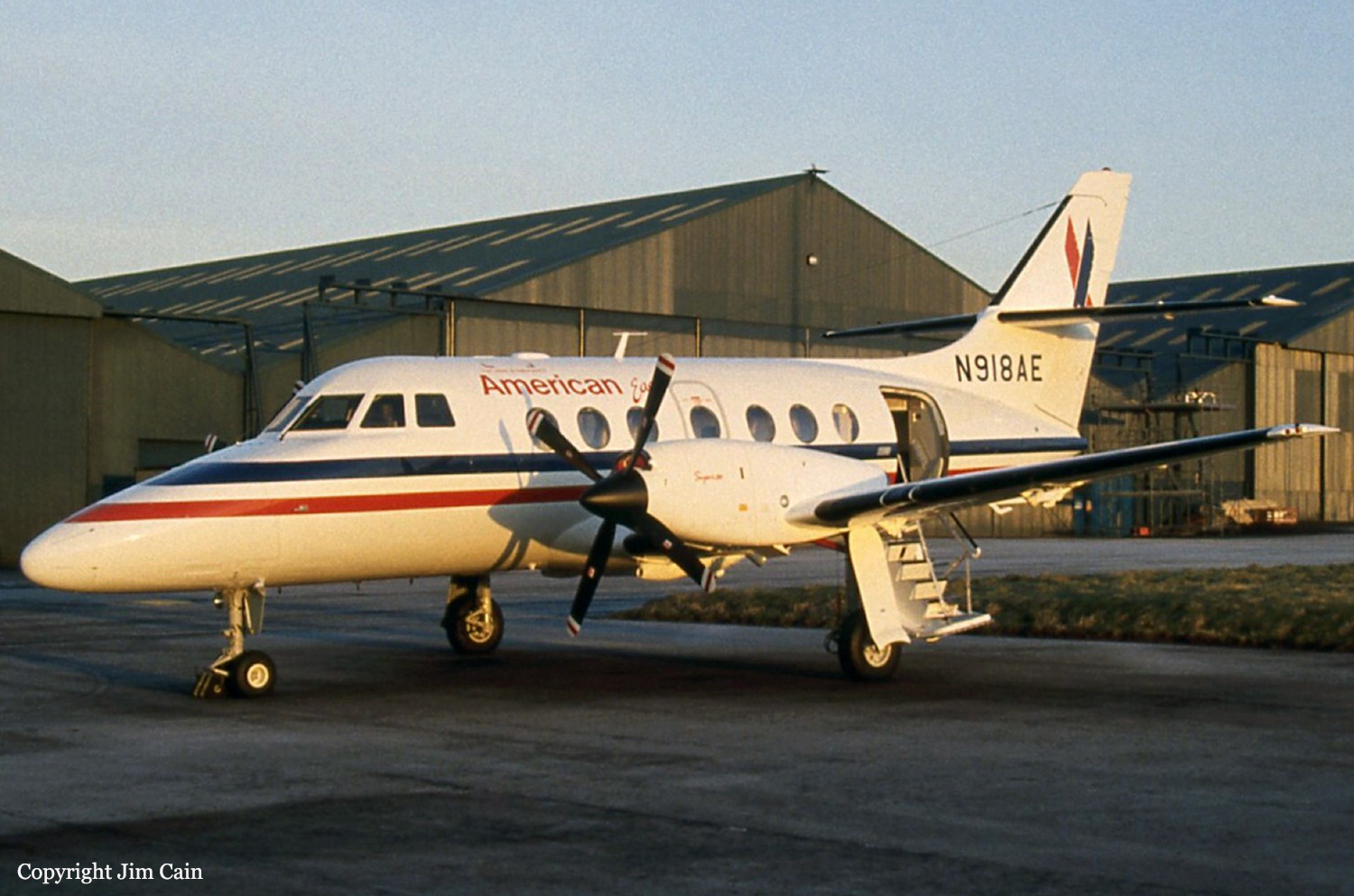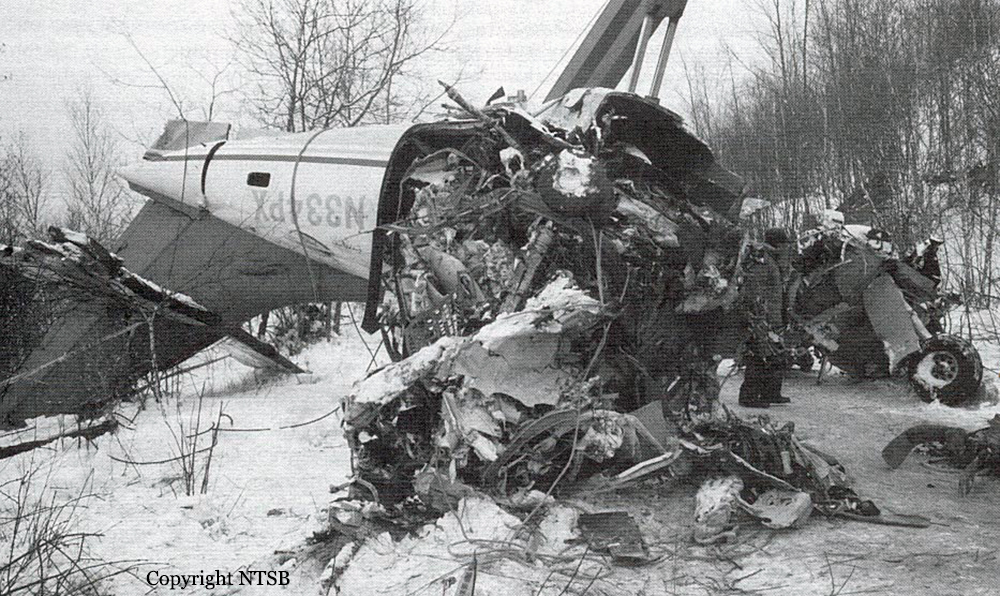Country
Crash of a BAe 3112 Jetstream 31 in Lloydminster
Date & Time:
Jan 20, 1998 at 1810 LT
Registration:
C-FBIE
Survivors:
Yes
Schedule:
Calgary - Lloydminster
MSN:
815
YOM:
1988
Flight number:
ABK933
Crew on board:
2
Crew fatalities:
Pax on board:
13
Pax fatalities:
Other fatalities:
Total fatalities:
0
Captain / Total hours on type:
635.00
Copilot / Total hours on type:
151
Aircraft flight hours:
16180
Circumstances:
At 1700 MST, Alberta Citylink flight 933, C-FBIE, a British Aerospace Jetstream 31, serial number 815, took off from Calgary, on a scheduled flight to Lloydminster, Alberta. The aircraft carried a two-pilot crew, 13 passengers, and 250 pounds of freight and baggage. A non-precision automatic direction finder (ADF) approach was conducted to runway 25. The first officer was flying the approach, and when the runway environment became visual, the captain took control, requested 35 degrees of flap, and commenced the final descent to the runway. On touchdown, the left main landing gear collapsed and both propellers struck the runway surface. The aircraft slid along the runway on the belly pod for about 1 800 feet, and when the left wing contacted snow on the edge of the runway, the aircraft turned about 160 degrees. The passengers and crew evacuated through the over-wing exit. There was no fire and no injuries. The Board determined that an unstabilized approach resulted in a heavy landing because the captain changed the configuration of the aircraft, and the high rate of descent was not arrested before contact was made with the runway surface. Contributing to the high rate of descent were the reduction of engine power to flight idle, airframe ice, and the time available for the final descent. Contributing to the damage on landing was the left-to-right movement of the aircraft.
Probable cause:
An unstabilized approach resulted in a heavy landing because the captain changed the configuration of the aircraft, and the high rate of descent that resulted was not arrested before contact was made with the runway surface. Contributing to the high rate of descent were the reduction of engine power to flight idle, airframe ice, and the time available for the final descent. Contributing to the damage on landing was the left to right movement of the aircraft.
Final Report:

Crash of a BAe 3201 Jetstream 32 in Raleigh: 15 killed
Date & Time:
Dec 13, 1994 at 1834 LT
Registration:
N918AE
Survivors:
Yes
Schedule:
Greensboro – Raleigh
MSN:
918
YOM:
1990
Flight number:
AA3379
Crew on board:
2
Crew fatalities:
Pax on board:
18
Pax fatalities:
Other fatalities:
Total fatalities:
15
Captain / Total hours on type:
457.00
Copilot / Total hours on type:
677
Aircraft flight hours:
6577
Circumstances:
Flight 3379 departed Greensboro at 18:03 with a little delay due to baggage rearrangement. The aircraft climbed to a 9,000 feet cruising altitude and contacted Raleigh approach control at 18:14, receiving an instruction to reduce the speed to 180 knots and descend to 6,000 feet. Raleigh final radar control was contacted at 18:25 and instructions were received to reduce the speed to 170 knots and to descend to 3,000 feet. At 18:30 the flight was advised to turn left and join the localizer course at or above 2,100 feet for a runway 05L ILS approach. Shortly after receiving clearance to land, the n°1 engine ignition light illuminated in the cockpit as a result of a momentary negative torque condition when the propeller speed levers were advanced to 100% and the power levers were at flight idle. The captain suspected an engine flame out and eventually decided to execute a missed approach. The speed had decreased to 122 knots and two momentary stall warnings sounded as the pilot called for max power. The aircraft was in a left turn at 1,800 feet and the speed continued to decrease to 103 knots, followed by stall warnings. The rate of descent then increased rapidly to more than 10,000 feet/min. The aircraft eventually struck some trees and crashed about 4 nm southwest of the runway 05L threshold. Five passengers survived while 15 other occupants were killed.
Probable cause:
The accident was the consequence of the following factors:
- The captain's improper assumption that an engine had failed,
- The captain's subsequent failure to follow approved procedures for engine failure single-engine approach and go-around, and stall recovery,
- Failure of AMR Eagle/Flagship management to identify, document, monitor and remedy deficiencies in pilot performance and training.
- The captain's improper assumption that an engine had failed,
- The captain's subsequent failure to follow approved procedures for engine failure single-engine approach and go-around, and stall recovery,
- Failure of AMR Eagle/Flagship management to identify, document, monitor and remedy deficiencies in pilot performance and training.
Final Report:




Crash of a BAe 3101 Jetstream 31 in Hibbing: 18 killed
Date & Time:
Dec 1, 1993 at 1950 LT
Registration:
N334PX
Survivors:
No
Schedule:
Minneapolis - Hibbing
MSN:
706
YOM:
1986
Flight number:
NW5719
Crew on board:
2
Crew fatalities:
Pax on board:
16
Pax fatalities:
Other fatalities:
Total fatalities:
18
Captain / Total hours on type:
2266.00
Copilot / Total hours on type:
65
Aircraft flight hours:
17156
Aircraft flight cycles:
21593
Circumstances:
While on a localizer back course approach the airplane collided with trees and the terrain approximately 3 miles from the runway threshold. The captain delayed the start of the descent that subsequently required an excessive descent rate to reach the FAF and MDH. The captain's actions led to distractions during critical phases of the approach. The flightcrew lost altitude awareness and allowed the airplane to descend below mandatory level off points. The captain's record raised questions about his airmanship and behavior that suggested a lack of crew coordination during flight operations, including intimidation of first officers. Company management did not address these matters adequately. The airline's flight operations management failed to implement provisions to adequately oversee the training of their flight crews and the operation of their aircraft. FAA guidance to their inspectors concerning implementation of ops bulletins is inadequate and has failed to transmit valuable safety information as intended to airlines. The aircraft was totally destroyed and all 18 occupants were killed.
Probable cause:
The captain's actions that led to a breakdown in crew coordination and the loss of altitude awareness by the flight crew during an unstabilized approach in night instrument meteorological conditions. Contributing to the accident were: the failure of the company management to adequately address the previously identified deficiencies in airmanship and crew resource management of the captain; the failure of the company to identify and correct a widespread, unapproved practice during instrument approach procedures; and the Federal Aviation Administration's inadequate surveillance and oversight of the air carrier.
Final Report:




